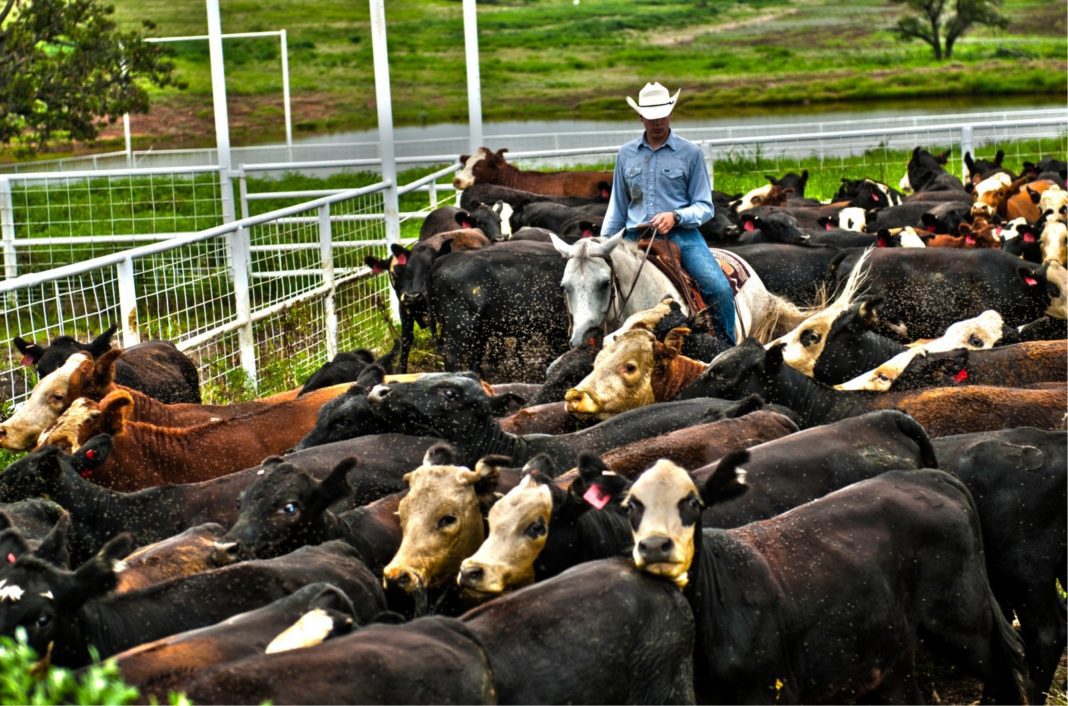Where Have All The Cowboys Gone?
Quite a few cowboys remain in Oklahoma, if statistics are any evidence. According to the state Department of Agriculture, Food and Forestry 2011 agricultural output, which includes cattle ranching, accounted for billions of dollars in total economic impact.
“Ranching, of course, supports other industries,” says Oklahoma Commissioner of Agriculture Jim Reese. “In 2011, there was about a $36 billion total impact from agriculture related industries. That’s based on the increase in cost of grain and fuel but also includes the added value expenses of buying grain, spraying pastures, etc. The last three years, it was much higher than that.”
Reese says about $7 billion in agricultural products are sold each year, including almost $4 billion in cattle in 2011.
“We’re an economy that grows $7 billion in new wealth every year,” says Reese. “Agriculture – ranching – creates wealth because cows are born and grow up. That doesn’t include the service industry and others that are supported by ranching.”
Michael Kelsey, executive director of the Oklahoma Cattlemen’s Association, says ranching is one of the leading industries in the state “as a function of land mass and land use.
“Beef cattle is the largest sector within agriculture,” Kelsey continues. “Beef cattle is big business. What’s unique about Oklahoma is the tremendous heritage of ranching. There are so many ranchers that are fifth- and sixth-generation ranchers. Now that sixth generation might be in diapers right now, but they’ll be there. It’s a priority for a lot of ranching families to uphold that tradition.”
Still, the industry has changed dramatically.
“People who only see food at the supermarket might think ranching is the same as it’s always been, and it’s not,” Reese says. “It’s not even the same as it was five years ago. The way cattle are bred and raised is different. The industry is much more advanced that way, as well as in other ways.”
The market for beef cattle has also changed in recent years.
“It’s completely different than anything we’ve seen in the past,” Kelsey says. “It’s a new normal, or we don’t know what ‘normal’ is anymore. The cattle cycle ebbs and flows depending on the market. But the cattle cycle isn’t normal anymore. Draught and input costs have been huge influences in breaking the normal cycle. Traditional supply and demand is still important, and consumer demand is still important. But the market as a whole looks different. For example, the market isn’t responding typically when it comes to high calf prices. Typically high prices for calves stimulate people to raise more calves. Usually, this demand would prompt ranchers to keep more heifers, say increasing from 200 to 250. But calf prices are high and ranchers aren’t generally keeping more heifers. That’s just one small picture of the grand view of how things have changed.”
Kelsey says that the input cost has changed how he runs his own cows. “You used to be able to wean and hold onto calves because feed resources were [affordable and plentiful] but it’s more expensive now, so fewer ranchers are holding onto cattle,” says Kelsey.
Changes in the market, in how technology is utilized and how ranchers operate their businesses have all impacted the industry to the point that the past’s early generations might be completely unfamiliar with how things work today, at least on the surface.
“My great-great-grandfather would be amazed at how far we’ve come,” says rancher Gentner Drummond, whose 25,000-acre ranch is located near Pawhuska. “He’d feel we lost it all, that we had lost the things he’d valued.”























